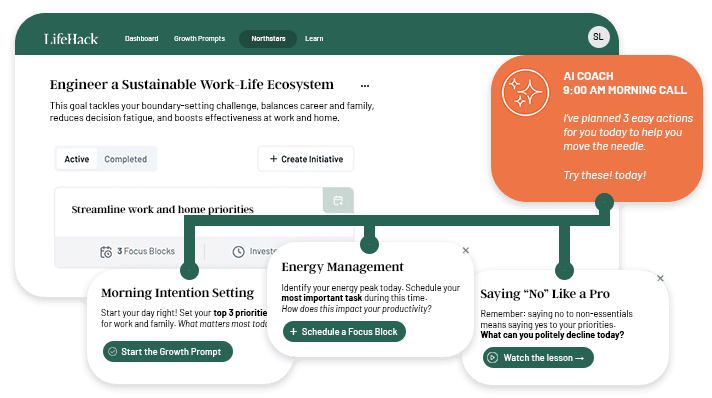The internet is flooded with articles about remote work and its benefits or drawbacks. But in reality, the remote work experience is so subjective that it’s impossible to draw general conclusions and issue one-size-fits-all advice about it. However, one thing that’s universal and rock-solid is data. Data-backed findings and research about remote work productivity give us a clear picture of how our workdays have changed and how work from home affects us—because data doesn’t lie.
In this article, we’ll look at three decisive findings from a recent data study and two survey reports concerning remote work productivity and worker well-being.
How Remote Work Affects Your Productivity
1. We Take Less Frequent Breaks
Your home can be a peaceful or a distracting place depending on your living and family conditions. While some of us might find it hard to focus amidst the sounds of our everyday life, other people will tell you that the peace and quiet while working from home (WFH) is a major productivity booster. Then there are those who find it hard to take proper breaks at home and switch off at the end of the workday.
But what does data say about remote work productivity? Do we work more or less in a remote setting?
Let’s take a step back to pre-pandemic times (2014, to be exact) when a time tracking application called DeskTime discovered that 10% of most productive people work for 52 minutes and then take a break for 17 minutes.
Recently, the same time tracking app repeated that study to reveal working and breaking patterns during the pandemic. They found that remote work has caused an increase in time worked, with the most productive people now working for 112 minutes and breaking for 26 minutes.[1]
Now, this may seem rather innocent at first—so what if we work for extended periods of time as long as we also take longer breaks? But let’s take a closer look at this proportion.
While breaks have become only nine minutes longer, work sprints have more than doubled. That’s nearly two hours of work, meaning that the most hard-working people only take three to four breaks per 8-hour workday. This discovery makes us question if working from home (WFH) really is as good a thing for our well-being as we thought it was. In addition, in the WFH format, breaks are no longer a treat but rather a time to squeeze in a chore or help children with schoolwork.
Online meetings are among the main reasons for less frequent breaks. Pre-pandemic meetings meant going to another room, stretching your legs, and giving your eyes a rest from the computer. In a remote setting, all meetings happen on screen, sometimes back-to-back, which could be one of the main factors explaining the longer work hours recorded.
2. We Face a Higher Risk of Burnout
At first, many were optimistic about remote work’s benefits in terms of work-life balance as we save time on commuting and have more time to spend with family—at least in theory. But for many people, this was quickly counterbalanced by a struggle to separate their work and personal lives. Buffer’s 2021 survey for the State of Remote Work report found that the biggest struggle of remote workers is not being able to unplug, with collaboration difficulties and loneliness sharing second place.[2]
Buffer’s respondents were also asked if they are working more or less since their shift to remote work, and 45 percent admitted to working more. Forty-two percent said they are working the same amount, while 13 percent responded that they are working less.
Longer work hours and fewer quality breaks can dramatically affect our health, as long-term sitting and computer use can cause eye strain, mental fatigue, and other issues. These, in turn, can lead to more severe consequences, such as burnout and heart disease.
Let’s have a closer look at the connection between burnout and remote work.
McKinsey’s report about the Future of work states that 49% of people say they’re feeling some symptoms of burnout.[3] And that may be an understatement since employees experiencing burnout are less likely to respond to survey requests and may have even left the workforce.
From the viewpoint of the employer, remote workers may seem like they are more productive and working longer hours. However, managers must be aware of the risks associated with increased employee anxiety. Otherwise, the productivity gains won’t be long-lasting. It’s no secret that prolonged anxiety can reduce job satisfaction, decrease work performance, and negatively affect interpersonal relationships with colleagues.[4]
Unlock Your Time Potential: From Chaos to Control
Discover how to reclaim your time and transform chaos into productivity with our comprehensive Time/Life Assessment.
If you're ready to take control of your time and boost your efficiency, don't miss this opportunity to get a personalized analysis and action plan.

3. Despite everything, We Love Remote Work
An overwhelming majority—97 percent—of Buffer report’s survey respondents say they would like to continue working remotely to some extent. The two main benefits mentioned by the respondents are the ability to have a flexible schedule and the flexibility to work from anywhere.
McKinsey’s report found that more than half of employees would like their workplace to adopt a more flexible hybrid virtual-working model, with some days of work on-premises and some days working remotely. To be more exact, more than half of employees report that they would like at least three work-from-home days a week once the pandemic is over.
Companies will increasingly be forced to find ways to satisfy these workforce demands while implementing policies to minimize the risks associated with overworking and burnout. Smart companies will embrace this new trend and realize that adopting hybrid models can also be a win for them—for example, for accessing talent in different locations and at a lower cost.
Remote Work: Blessing or Plight?
Understandably, workers worldwide are tempted to keep the good work-life aspects that have come out of the pandemic—professional flexibility, fewer commutes, and extra time with family. But with the once strict boundaries between work and life fading, we must remain cautious. We try to squeeze in house chores during breaks. We do online meetings from the kitchen or the same couch we watch TV shows from, and many of us report difficulties switching off after work.
So, how do we keep our private and professional lives from hopelessly blending together?
The answer is that we try to replicate the physical and virtual boundaries that come naturally in an office setting. This doesn’t only mean having a dedicated workspace but also tracking your work time and stopping when your working hours are finished. In addition, it means working breaks into your schedule because watercooler chats don’t just naturally happen at home.
If necessary, we need to introduce new rituals that resemble a normal office day—for example, going for a walk around the block in the morning to simulate “arriving at work.” Remote work is here to stay. If we want to enjoy the advantages it offers, then we need to learn how to cope with the personal challenges that come with it.
Learn how to stay productive while working remotely with these tips: How to Work From Home: 10 Tips to Stay Productive
Featured photo credit: Jenny Ueberberg via unsplash.com
Ready for a Goal Breakthrough? Unlock Your Personalized Strategy

Experience the power of a strategy tailored just for you.
Our personalized system provides:
- Custom-crafted action steps based on your unique situation
- Insights tailored to your specific challenges and strengths
- A personalized roadmap to turn your goals into reality
Tailored recommendations powered by smart analysis
Reference
| [1] | ^ | DeskTime: 52/17 updated – people are now working and breaking longer than before |
| [2] | ^ | Buffer: The 2021 State of Remote Work |
| [3] | ^ | McKinsey & Company: What employees are saying about the future of remote work |
| [4] | ^ | Biomed Res Int.: Workplace Phobic Anxiety as a Mental Health Phenomenon in the Job Demands-Resources Model |















































